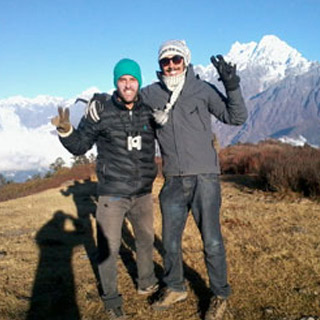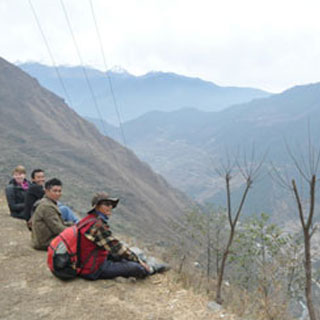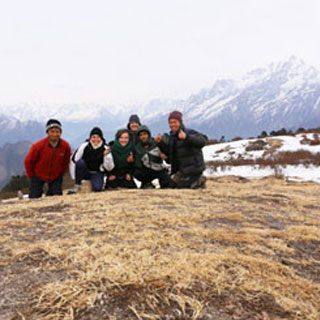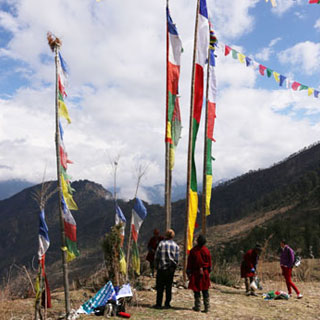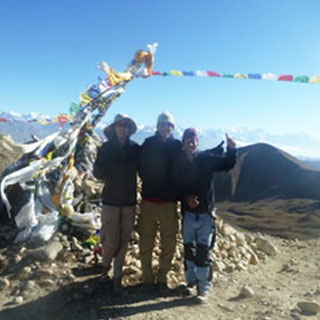General Information
Heartily Welcome you to Nepal,
Nepal is a collision zone. The towering Himalaya Mountains attest to the colossal tectonic force of the Indian Subcontinent as it plows into mainland Asia. Nepal also marks the collision point between Hinduism and Buddhism, between the Tibeto-Burmese language group and the Indo-European, and between Central Asian culture and Indian culture. Moreover, it is the birthplace of The Lord Buddha, holy Hindu sites, beautiful temples, stupas, mosques and churches, a number UNESCO heritage sites and the most mesmerizing scenery where people could ever feast their eyes on, all bring people flocking to the peace and harmony country, Nepal.
It's little wonder, then, that this beautiful and diverse country has fascinated travelers and explorers for centuries.
Capital:
Kathmandu, population 3,442,271
Major Cities:
Pokhara, population 468,000
Patan, population 220,000
Biratnagar, population 167,000
Bhaktapur, population 83,000\
Government
The mountainous Kingdom of Nepal became a multiparty federal republic in 2008, but political instability has continued.
The president of Nepal serves as chief of state, while the prime minister is head of government. A Cabinet or Council of Ministers fills out the executive branch.
Nepal has a unicameral legislature, the Constituent Assembly, with 601 seats. 240 members are directly elected; 335 seats are awarded by proportional representation, and 26 are appointed by the Cabinet.
The Sarbochha Adala (Supreme Court) is the highest court.
The current president is Bidya Devi Bhandari; former Maoist rebel leader Pushpa Kamal Dahal (aka Prachanda) is Prime Minister.
Official Languages:
Nepal, known as a multilingual country speaks 123 Nepalese languages as a mother tongue (first language) in Nepal. Most belong to the Indo-Aryan and Sino-Tibetan Language Families. However, Nepali is the official languages which is Derived from Sanskrit, Nepali is related to the Indian language, Hindi, and is spoken by about 90 percent of the population in either native or second language fluency. Many Nepalese in government and business also speak English.
Other common languages in Nepal include Maithili, Bhojpuri, Tharu, Gurung, Tamang, Awadhi, Kiranti, Magar, and Sherpa.
Population:
Nepal is home to 29,765,760 of people.
The population is primarily rural. Nepal's demographics are complicated not only by dozens of ethnic groups but by different castes, which also function as ethnic groups. In total, there are 103 castes or ethnic groups.
Religion:
Religion occupies an integral position in Nepalese life and society. Nepal is primarily Hindu in religion though it is -a cultural, multi-ethnic, multi-lingual, and religiously diverse nation with many religions being practiced here since the ancient times. However, Buddhism (at about 11%) also has a lot of influence. The Buddha, Siddhartha Gautama, was born at Lumbini, in southern Nepal.
In fact, many Nepalese people combine Hindu and Buddhist practices; many temples and shrines are shared between the two faiths, and some deities are worshipped by both Hindus and Buddhists.
Smaller minority religions include Islam, with about 4%; the syncretic religion called Kirat Mundhum, which is a blend of animism, Buddhism, and Saivite Hinduism, at about 3.5%; and Christianity (0.5%).
Geography:
Nepal covers 147,181 sq. kilometers (56,827 sq. miles), sandwiched between the People's Republic of China to the north and India to the west, south, and east. It is a geographically diverse, land-locked country. Of course, Nepal is associated with the Himalayan Range, including the world's tallest mountain, Mt. Everest. Standing at 8,848 meters (29,028 feet), Everest is called Saragmatha or Chomolungma in Nepali and Tibetan. Southern Nepal, however, is a tropical monsoonal lowland, called the Tarai Plain. The lowest point is Kanchan Kalan, at just 70 meters (679 feet). Most people live in the temperate hilly midlands.
Climate:
Nepal lies at roughly the same latitude as Saudi Arabia or Florida. Due to its extreme topography, however, it has a much wider range of climate zones than those places. The southern Tarai Plain is tropical or subtropical, with hot summers and warm winters. Temperatures reach 40°C in April and May. Monsoon rains drench the region from June to September, with 75-150 cm (30-60 inches) of rain.
The central hill-lands, including the Kathmandu and Pokhara valleys, have a temperate climate and are also influenced by the monsoons. In the north, the high Himalayas are extremely cold and increasingly dry as the altitude rises.
Economy:
Despite its tourism and energy-production potential, Nepal remains one of the world's poorest countries. Agriculture is the mainstay of the economy, providing a livelihood for almost two-thirds of the population but accounting for only one-third of GDP. Industrial activity mainly involves the processing of agricultural products, including pulses, jute, sugarcane, tobacco, and grain..Nepal was hit by massive earthquakes in early 2015, which damaged or destroyed infrastructure and homes and set back economic development. Political gridlock in the past several years and recent public protests, predominantly in the southern Tarai region, have hindered post-earthquake recovery and prevented much-needed economic reform. Additional challenges to Nepal's growth include its landlocked geographic location, persistent power shortages, and underdeveloped transportation infrastructure.he per capita income for 2013 was just $694 US per person. Over 1/2 of Nepalis live on less than $2 a day; according to the CIA, Nepal's unemployment rate hovers around 50%.
Nepal exports garments, carpets, and hydroelectric power.$1 US = 108.8 Nepal rupees (Jan. 2017).
Health :
Medical treatment is expensive at Western travelers' clinics in Nepal. Healthcare is poor in most places outside the Kathmandu Valley and Pokhara. You should be aware that it might be difficult to obtain rapid helicopter evacuation if you were to fall ill or suffer a serious accident in a remote area of the country. Cases of cholera have been reported in Kathmandu and seasonal outbreaks across the country are common during the Monsoon (June to September). If you are traveling to Nepal you should familiarize yourself with precautions needed to avoid cholera, in particular, avoiding tap water, ice, raw or undercooked vegetables. If you suffer from diarrhea during a visit to Nepal seek immediate medical attention.
There are seasonal outbreaks of dengue fever in Nepal which have resulted in a number of deaths. Japanese encephalitis is known to occur in Nepal. A number of people have died. The WHO advises short-term visitors to Nepal during the rainy season (June-September) and all long-term visitors to Nepal to obtain Japanese encephalitis vaccinations before traveling.
Malaria is relatively rare in the hills, including the Kathmandu Valley. However, you should take adequate precautions, including considering prophylactic medication, for travel in the Terai (which includes Bardiya, Lumbini, Chitwan and Koshi Tappu). Prophylactics are available – but expensive – in Kathmandu. Rabies is present in Nepal. Stay alert around stray animals (including monkeys) and seek immediate medical advice if bitten or scratched. In the 2010 Report on the Global AIDS Epidemic the UNAIDS/WHO Working Group estimated that around 60,000 adults aged 15 or over in Nepal were living with HIV. Exercise the normal precautions to avoid exposure to HIV/AIDS.
Seek medical advice before traveling to Nepal and ensure that all appropriate vaccinations are up-to-date. It is advisable to bring along warm clothing while traveling from November to February and tropical wear from March to October.
The destructive 2015 Earthquake killed around 20,000 people, and Nepal will be recovering for years to come. Many significant Monasteries, Temples, Heritage Cites and other culturally and religiously important areas were destroyed in the Earthquake. Nepal is a safe and welcoming country to visit, and tourism supports the local economies and rebuilding efforts across the country.
Come and join us for a life changing experience – with Himalayan Unforgettable Adventures!
Traveler’s Says
We did the Langtang Valley Trek with Nyima Chhomo (the daughter of Durga Tamang) and were really happy with everything. We enjoyed having a female guide which is really uncommon in trekking in Nepal. The trek was stunning and well organized.… [More]
Hannah Kraft and Solveig Leas, GermanyDear Durga, The three of us are very well and have enjoyed this week a lot! I really liked how authentic it was. We shared some nice moments with the home owners, like seeing a freshly slaughtered hen getting prepared for… [More]
Guillaume Billardon, SwazilandMy husband & I booked a private trek
combining the Tamang Heritage & Langtang trails. Our guide, Nyima Chhomo, and porter, Dobar, were wonderful hosts throughout our 13 day adventure. Their local knowledge was evident and we were glad to have… [More]
Andrea ODonnell & Tim ODonnell, United StatesExcellent experience - Tamang Heritage Trek We took the Tamang Heritage trek September 2024 and it was a wonderful experience. The trip was organized as promised and the guide, Pasang, was exceptional. Pasang is from the local villages so knew many… [More]
Shareen Leland and Marian, United StatesBonjour Durga Tamang, Tout s’est bien passé à Katmandou, nous avons pu prendre le temps de visiter la ville tranquillement. Nous sommes rentrés un peu fatigués du trek mais nous sommes contents, c’était vraiment une bonne expérience et nous sommes ravis… [More]
Hélène Theodori et sa famille, Trekking, FranceDear Durga-- I hope this note finds you and your lovely family well. Happy New Year! Thank you very much for your good wishes a few weeks back. We all had covid in my family, and we are only just getting… [More]
Jennifer, AustraliaHello, Durga my friend. The trek was an amazing experience and despite having to shorten the trip we both are grateful for the experience. Both Krisna and Nyima were a big part of the reason that we had a great experience.… [More]
David William Merrifield, United StatesNamaste Tamang, I think Pasang is a really good guide, just a must take more attention for the most powerless person in a group. The guide has the responsibility for the tourist, and must be so slow during Trekking like the last… [More]
Ayu Mielke, GermanyOrginally I wanted to do some trekking but having only 14 days, I wanted to see Temples and World Heritage locations too, like where Buddha was born, so with Durga's help decided to do the 10 day "Exploring Hertiage side" and… [More]
Gary Michael Clark, United StatesCannot recommend enough! Durga is extremely friendly and went above and beyond to make our trip welcoming and smooth (not just on the trek- before and after as well)
Samdu (our guide) was extremely friendly and helpful, couldn't have done… [More]
The best thing you'll ever do! The trek was unbelievable, Durga was extremely welcoming, friendly and helpful. Making the whole thing so smooth. Samdu our guide was perfect, couldn't have been more helpful. Hassan our porter was amazing, I don't know… [More]
MR DANIEL HORROCKS, United KingdomGreat experience at Langtang Valley. Durga the owner took care of meeting all my requests and tailor-made the experience according to my needs. My guide was enthusiastic and nice. Highly recommended.
[More] Esteban Camargo, ColombiaTamang Heritage Trail, Langtang Valley Trek
Nach der Empfehlung im Stefan Loose Reiseführer hatten wir uns bereits zuhause bei der Vorbereitung unserer Reise mit Durga Tamang in Verbindung gesetzt. Das persönliche Gespräch in Kathmandu hat uns dann voll bestätigt, mit Himalayan… [More]
Heinz und Elisabeth, GermanyIt was my first visit to Nepal and I was anxious about my ability to manage the trek. I am 58 and keep active and fit but I am not used to the heights of the Himalayas. Thanks to Durga's care… [More]
Katherine Westfold, AustraliaChoosing Himalayan Unforgettable Adventure and Durga Tamang as our (local!) travel company and trekking guide was definitly the best decision for our Nepal trip. Not only that the trekking was organized in a thoughtful way! Durga showed us through spectacular landscapes… [More]
Leonhard Jungwirth, AustriaI came to Kathmandu with the idea in mind to do some trekking, but without having anything planned. When I first arrived there I got in touch with some agencies in Thamel but I didn't trust them much because they seemed… [More]
Allen, ItalyChoosing to have Durga guide my trekking partner and I was one of the best decisions Ive ever made. We trekked Langtang valley at the end of monsoon season and truly experienced the culture of the Nepali and Tibetan. Plus, you… [More]
Noah Willison, United States"Langtang valley Trek"
Mar 28th 2016 Namaste: We really enjoyed out trip to Langtang with you Durga Tamang. Everything was planned perfectly and we were thrilled to get the whole family onto the top of Kyanjin Ri. Langtang is safe now.
… [More]
"Tamang Heritage Trek"
May 17 2016 Namaste: Overall our experience in Nepal with you was really amazing, the days we spend in the Tamang Valley, walking around that beautiful views of mountain peaks, forests and little villages were the best part of… [More]
Oriol Fonos, SpainDonna and I had a great experience on our trek of the Annapurna circuit. The scenery, the trail, mountain villages, and the Nepalese people were exceptional as we expected.
Himalayan Unforgettable Adventure provided the transportation, guide, porters, meals and accommodation for… [More]
Bill and Donna Bauer, CanadaWhen we began planning our trip to Nepal in 2015 we began to quickly realise just how many decisions we were going to need to take to put together our itinerary, not least being the extensive options available to you when… [More]
Simon and Caroline, British Indian Ocean TerritoryIn October 2015, my husband and I went trekking in Nepal with our friends Bill and Donna. We were a private group and originally our plan was to hike the Langtang valley. We decided to book our trek through Durga Tamang who runs Himalayan… [More]
Anne and Harry Range, CanadaI just finished the Langtang Valley trek with Durga Tamang as my guide and Nima Lama as my smiling hard-working porter. Unfortunately, the weather was uncooperative – constant clouds, drizzle, mist – making mountain views elusive. (But even with that, I… [More]
Mike, United StatesDear Durga ,I want to say thank you so much for the outstanding trip up to the top of kala pather! We had sucha great time with you and Ram. You are an excellent guide and a wonderful person. We felt… [More]
Joe Michael and Kim, ItalyLe treck etait super! Nous sommes passes de village en village, les paysages sont magnifiques. Nous avons vu les differents métiers, des tisseuses, des bergers, des gens dans les cultures, le travail se fait a l’ancienne, c’ est tres interessant. Le… [More]
Jeanne, Jenny and Sarah, LuxembourgFebruary 10 2014 Namaste: We have very much appreciated an approach combining volunteering for RTEES during one week in the small Tamang village of Gatlang, and a 10 days trek in the Langtang valley, organized by Himalayan Unforgettable Adventure.
This… [More]
Isabelle and Alexis, FranceNamaste. We wanted to organise our trek before we arrived in Kathmandu, and after some extensive research came across Durga Tamang and his organisation (that are doing wonderful things for the villages of the Tamang Heritage Trail). Durga was very responsive… [More]
Nelly and Nathan, AustraliaNamaste. We wanted to organise our trek before we arrived in Kathmandu, and after some extensive research came across Durga Tamang and his organisation (that are doing wonderful things for the villages of the Tamang Heritage Trail). Durga was very responsive… [More]
Nelly and Nathan, AustraliaNamaste. We wanted to organise our trek before we arrived in Kathmandu, and after some extensive research came across Durga Tamang and his organisation (that are doing wonderful things for the villages of the Tamang Heritage Trail). Durga was very responsive… [More]
Nelly and Nathan, AustraliaWe contact Durga to make the Heritage Trail and Langtang Trail (1 march to 13 march 2014) and he offer us to go before starting the trek two days at his village, Gatlang, to see the LOSAR FESTIVAL (feb- march Buddhist… [More]
Margarida and Jorge, SpainThis was undoubtedly a unique, an unforgettable experience that I waited for years to fulfill. Thank you so much for turning it real and for showing me the simplicity and greatness of the Himalayan Tamangs and their own kingdom.
Making your… [More]
Miguel Buto, Portugal6 January 2014 Namaste. We wanted to organise our trek before we arrived in Kathmandu, and after some extensive research came across Durga Tamang and his organisation (that are doing wonderful things for the villages of the Tamang Heritage Trail). Durga… [More]
Nelly and Nathan, AustraliaThe highlight of our trip to Nepal was our amazing two week trek along the Tamang Heritage and Langtang trails. The scenery and moutain views in this area are absoutely gorgeous, something we will remember for years to come. The trip… [More]
Margit McLaughlin, United StatesWe contact Durga to make the Heritage Trail and Langtang Trail (1 march to 13 march 2014) and he offer us to go before starting the trek two days at his village, Gatlang, to see the LOSAR FESTIVAL (feb- march Buddhist… [More]
MARGARITA AND JORGE, SpainFebruary 10 2014 Namaste: We have very much appreciated an approach combining volunteering for RTEES during one week in the small Tamang village of Gatlang, and a 10 days trek in the Langtang valley, organized by Himalayan Unforgettable Adventure.
This approach… [More]
Isabelle and Alexis, FranceNamaste: We did the Heritage Trail and Langtang Valley Trail with Durga and his team and was a wondurful experience. That mountains are so beautiful and the village people are very friendly and kind. I really recommend do that trails with… [More]
Margarida and Jorge, FranceDate: 22 Oct 2013 Our Upper Mustang trek was an amazing experience both in terms of the unusual physical beauty and the ever-present stream of spirituality, especially in the extraordinary medieval city of Lo Manthang. Durga Tamang, our trekking guide, made… [More]
Mylo Schaaf and Dan Lowenstein, United StatesDurga is a really nice men. when we first met him we already had some bad experiences with tour guides in Kathmandu who tried to sell very hard there trekking trips. but durga wasn't like those man. he made directly a… [More]
Antilia and Luc, FranceTravelling alone, and with the idea of going trekking, I started to inform myself, which trail I should choose. I read about different treks and choose the Heritage Trail, because it is a relatively new trek, easy to walk and everyone… [More]
Michael, United StatesDurga is a really nice men. when we first met him we already had some bad experiences with tour guides in Kathmandu who tried to sell very hard there trekking trips. but durga wasn't like those man. he made directly a… [More]
Alex , Jana and Adrian, Germany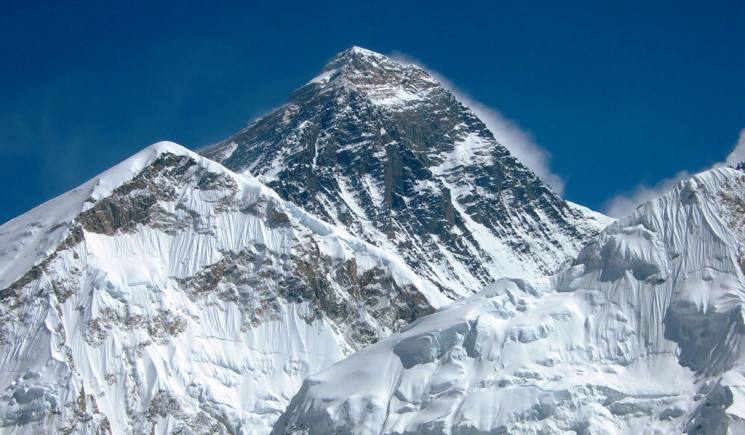
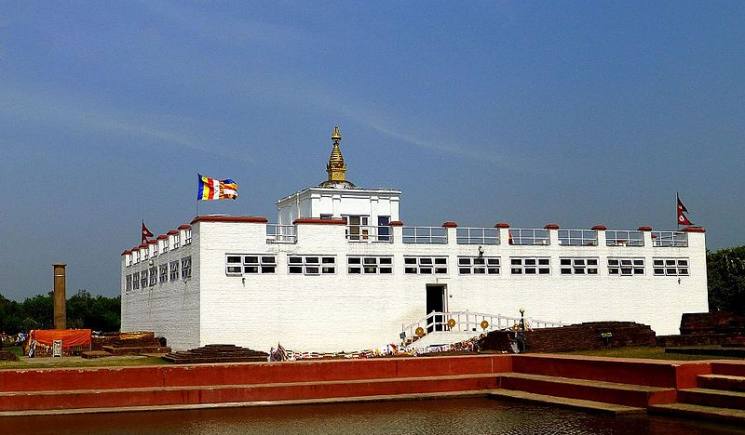
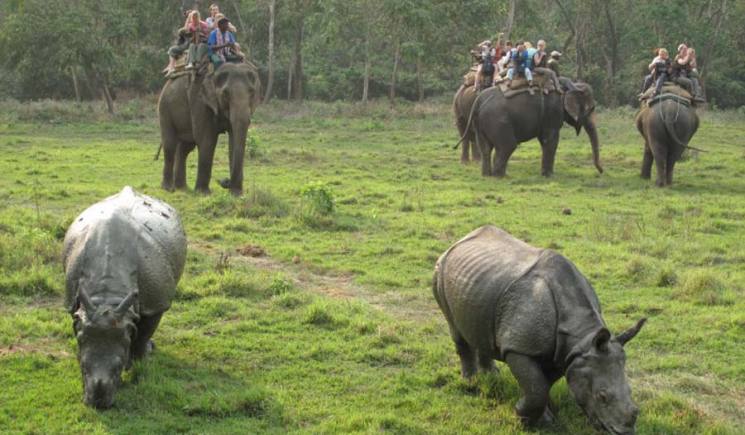
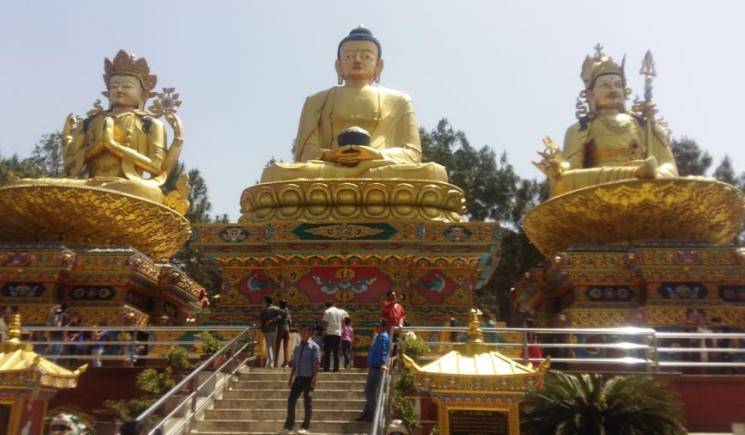
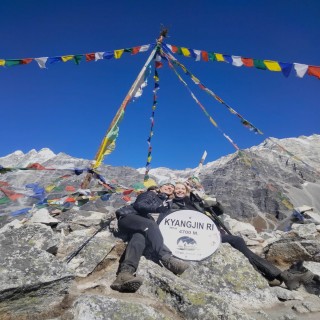
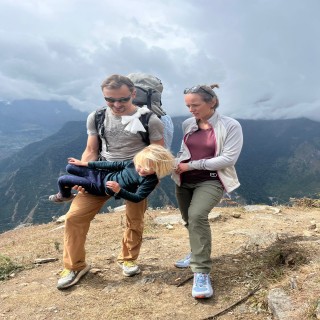
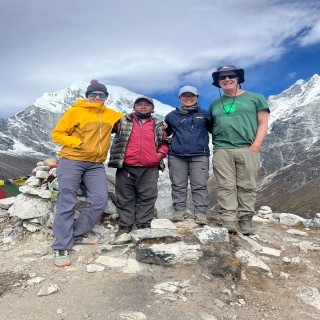
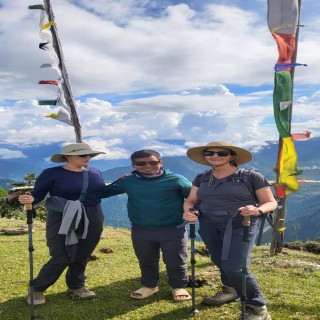
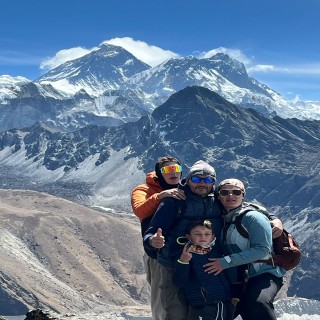
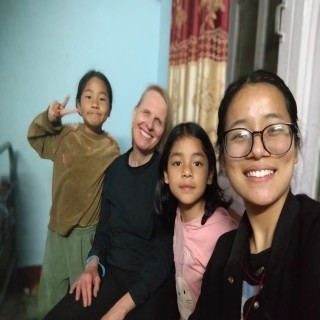
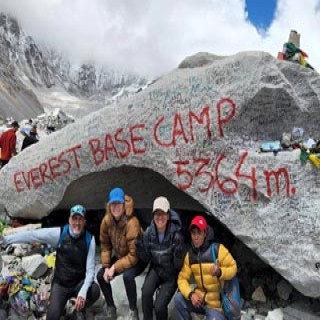
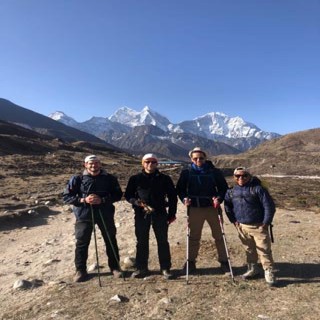
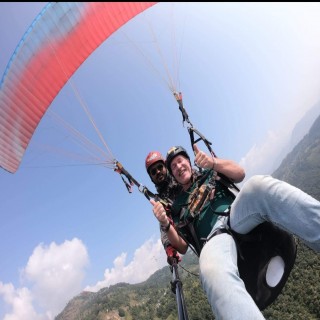
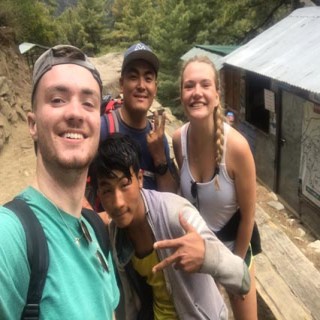
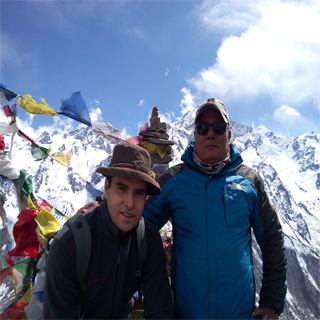
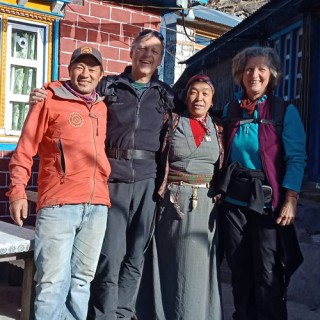
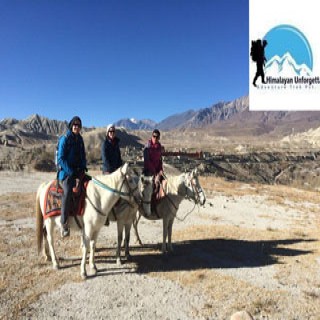
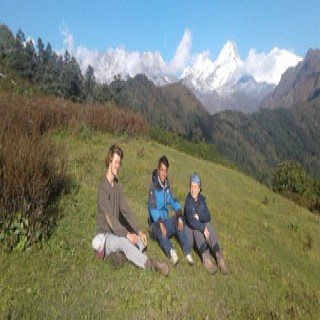
.jpg)
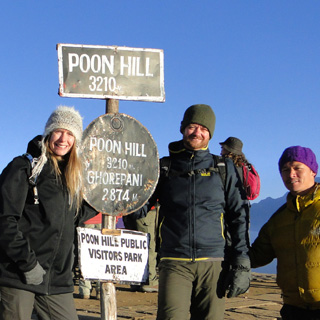
.jpg)
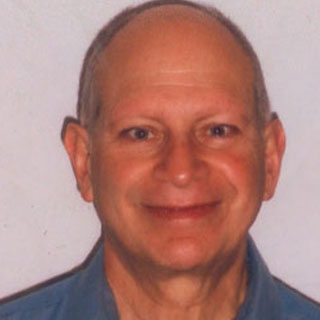

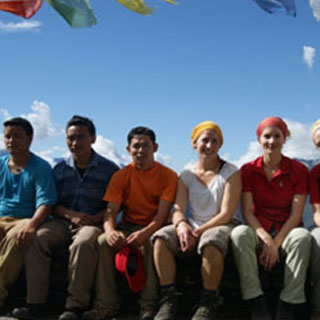
.jpg)

